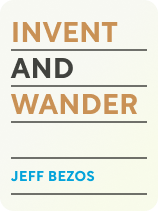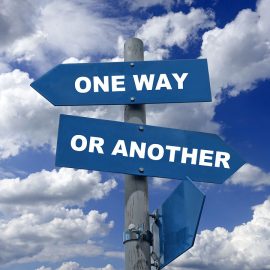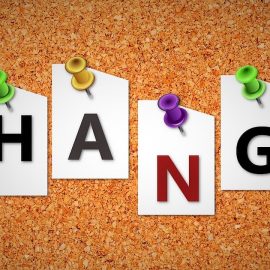
How did Amazon become the booming online business it is today? What innovations set Amazon apart from the rest?
In Invent and Wander, Jeff Bezos chronicles Amazon’s meteoric rise from a niche online retailer to the ubiquitous digital superstore of the 21st century. Bezos’s writings and speeches also illustrate his values and insights into innovation and business success.
Read below for an overview of Invent and Wander by Jeff Bezos.
Invent and Wander by Jeff Bezos
In 1994, a young programmer named Jeff Bezos took a chance on himself, quit his steady job, and founded the first online bookstore. Three decades later, his business—Amazon—is one of the giants of the internet, valued at over $1 trillion, and has utterly revolutionized the retail marketplace while pioneering the field of online computing. Always looking toward the future, Bezos leveraged his Amazon fortune to found Blue Origin, a business through which he’s pushing the frontier of commercial space exploration.
In Invent and Wander, Jeff Bezos publishes a compilation of his letters to Amazon shareholders, combined with excerpts from interviews and speeches Bezos has given. It features an introduction by Walter Isaacson fleshing out details on Bezos himself.
Bezos has been ranked as one of the most effective CEOs in the world. From his humble beginnings as a software developer, he caught the internet wave of the ’90s, survived the dot-com crash of 2000, and grew his net worth to over $200 billion by 2020. His coauthor, Isaacson, is a popular biographer known for his books on Leonardo da Vinci, Apple cofounder Steve Jobs, and Bezos’s rival in the space race, Elon Musk.
The Rise of Amazon
Bezos’s story is the story of Amazon, the business he founded in 1994. Though Bezos doesn’t take all of the credit for the company’s success, it was he who shouldered the risk of creating an online retail store in a decade that provided a wealth of opportunities that many of Bezos’s contemporaries squandered. Pulling from Amazon’s shareholder statements and Isaacson’s biographical sketch of its founder, we’ll trace the company’s history from Bezos’s childhood to Amazon’s modest early days in Seattle. These reports chart Amazon’s survival through the internet bubble and the Great Recession, as well as the company’s rapid expansion as it added an increasing number of services, both for its customers and its business partners.
Meet Jeff Bezos
The future multibillionaire Amazon founder was born on January 12, 1964, while his 17-year-old mother was still attending high school. Bezos’s path to wealth and recognition was fraught with financial risk, and quantifiable success would be a long time coming. Bezos and Isaacson trace Bezos’s early family influences, his childhood interest in science and computers, and his fateful decisions during college and after that altered the path of his future.
Bezos’s mother, Jacklyn Gise, became pregnant with him while still in high school. She was only allowed to graduate because Bezos’s grandfather fought for her right to attend, but her success was due to her resilience, which Isaacson says she passed on to her child. At college, Jacklyn met and later married a Cuban immigrant named Miguel Bezos, who adopted Jeff as his son. By the age of 10, Jeff Bezos was already tinkering with computers and the rudimentary internet of the 1970s, an interest that his mother encouraged. During summers at his grandparents’ ranch, Bezos learned values of perseverance and resourcefulness—as when his grandfather went out of his way to fix things on his own rather than paying someone else.
Amazon Is Born
Bezos praises American culture for encouraging and supporting entrepreneurs like himself, but that didn’t make starting his business any less of a risk. For most of the first decade of its existence, Amazon stood on shaky financial ground, and it survived by putting its focus on the customer experience and experimenting with new services and products. In Bezos’s annual shareholder letters, he covers Amazon’s genesis, how it expanded its business model and user base, as well as how it weathered the dot-com crash at the turn of the century.
Bezos developed Amazon’s original business plan not to be a rigid blueprint but to let himself think through his company’s potential problems. Bezos says he selected books as the first product to sell because an online bookstore could offer a wider selection than any physical retailer. With an initial investment from his parents’ life savings, Bezos moved to Seattle—not only because it was a computing industry hotbed, but for its proximity to the country’s biggest book wholesaler.
Like so many other new technology entrepreneurs in the ’80s and ’90s, Bezos started his business from his garage. Amazon’s website went online on July 16, 1995, offering access to nearly every book in print. Even without advertisement, orders started pouring in from all over the world.
Bust and Boom
But all was not well in the online business world. During the downturn that was to come, Amazon survived because of its mission to constantly build on its relationship with customers. While acknowledging that the internet bubble was hard on Amazon’s investors in the short term, Bezos explains the positive signs in Amazon’s actual financial numbers, how the company’s business model was better poised for success than those of other online stores, and how pioneering in whole new markets opened up Amazon for even greater successes.
Isaacson recounts that 1999 marked the beginning of what would be known as the “dot-com crash,” when most of the internet startups of the ’90s proved to be unprofitable and went out of business.
Amazon shares dropped from $106 in 1999 to $6 in 2001, and though industry experts predicted Amazon’s collapse, Bezos kept his eyes on its actual value, measured by customers, sales, and cash flow. He reassured investors that Amazon was sound by showing that financially it was performing better than ever. Although Amazon consistently lost money during the years it spent ramping up, it ended 2000 with $1 billion in cash and a record-high score on the American Customer Satisfaction Index.
Forging Ahead
The next economic hurdle Amazon faced was the Great Recession of 2008. During this downturn and the decade after, Amazon held its course and continued to grow. Bezos highlights three of Amazon’s business innovations that blossomed into permanent, successful programs that have shaped Amazon’s character in the 21st century—Marketplace, Prime, and Amazon Web Services—while explaining how Amazon faced the Covid crisis and continues to flourish in the shifting online economy.
Business Innovations
Launched in 2000, Amazon Marketplace grew out of attempts to host third-party vendors on Amazon’s platform. In its early years, Amazon partnered with other sellers so customers could access goods that Amazon itself didn’t keep in stock. After trying business models that separated outside vendors’ products from Amazon’s offerings, Amazon Marketplace placed third-party merchandise side-by-side with Amazon’s products. Rather than diminishing Amazon’s profits, Bezos argues that Marketplace is a win for all participants. It encourages healthy competition that results in better deals for customers while allowing Amazon’s partners access to a global distribution network that they never could have built themselves.
Another risky venture was Amazon Prime, a customer loyalty program that coupled discounts with free shipping on most items. From its conception in 2005, the initial financial projections for Prime suggested it might be a financial boondoggle, and Bezos admits that Prime was risky because if it failed, it would be hard to roll back without incurring customer resentment. Instead, Prime was a smashing success. It turned out that customers were eager to pay an annual premium for the convenience it offered, as well as its added perks such as rapid delivery and streaming video. For many users, Prime made ordering online preferable to shopping in stores.
Amazon’s third major innovation is completely separate from its retail identity. Initiated in 2006, Amazon Web Services (AWS) provides on-demand cloud computing tools that businesses can access on a pay-per-use basis. Bezos explains that AWS grew out of Amazon’s attempts to solve its own computing problems. Once the company’s software team designed the digital tools they needed, they realized that other companies would need them as well. The first AWS customers were small business start-ups that couldn’t afford their own IT departments, but soon, even large corporations turned to AWS to save costs. Though AWS started as a sort of side hustle, it now represents a significant pillar of Amazon’s standing as an economic giant.
Crisis and Competition
In 2020, the Covid pandemic drove home how important Amazon is to its customers. Online retail let people order basic necessities without risking exposure from in-person shopping. However, Bezos says that unlike the normal increase in business that comes with holiday shopping, the surge of online ordering during the Covid lockdown caught Amazon off guard. The company hired almost 200,000 new workers prioritizing delivery of essential goods. Amazon’s Marketplace worked to clamp down on third-party vendors engaged in price gouging, while AWS provided cloud computing to government agencies, medical researchers, and emergency call centers, as well as schools and businesses that had to rapidly switch to online work.
While Amazon took the lead in online retail, its success didn’t crush its competition—instead, Amazon changed the nature of retail and created new markets for other businesses to pursue. Major competitors like Walmart have now moved into online retail while offering services that Amazon can’t, such as curbside order pickup. By normalizing at-home delivery, Amazon created an avenue for companies such as Instacart that let grocery stores become online vendors. Bezos insists that he isn’t dismayed by the increasingly crowded online marketplace because he doesn’t believe that the competition detracts from Amazon’s value. Rather, the online retail market is still growing, as is Amazon’s overall share.
The Cornerstones of Amazon’s Success
When Amazon made over $100 billion in sales in a single year for the first time, Bezos reported that they’d achieved that volume faster than any other business. Instead of taking credit for that himself, Bezos attributes Amazon’s success to its workers and to the company’s culture, which he says was created by Amazon employees through their collaboration with each other, rather than being set from on high. In his writings and interviews, Bezos extols the values of that culture, which include intense customer focus, long-term planning, and a willingness to take risks and innovate.
It’s All About the Customers
From the start, Bezos declared his intention that Amazon should be the most customer-friendly business in the world. In practice, that means putting customers first is the guideline for every business decision. Bezos describes his deep respect for Amazon’s customers, how their needs drive the business to constantly improve, and how customer focus dictates Amazon’s expansion into new territories and markets.
Bezos starts from the assumption that customers are intelligent—they know the difference between good and bad service, and they can see through any flimsy marketing campaign that might try to brush away a company’s faults. Therefore, the only way to build a good brand is to always give customers a positive experience. No matter the customer, there are always certain constants—people like having a variety of options, paying less for them, and receiving what they order quickly. These constants demand that Amazon’s team meet high expectations in everything they do and teach those expectations to every new employee.
Taking the Long View
To maintain Amazon’s market leadership, Bezos and the rest of his leadership team focus on the company’s success in the future, not on its current quarterly statements. Bezos explains his insistence on making decisions that pay out in the long run, how this reflects an “ownership” mindset, and why many of his long-term decisions are, by necessity, judgment calls.
As early as Bezos’s first letter to shareholders in 1997, he warned investors that Amazon would often engage in practices that incurred short-term losses. The point was to quickly take a lead in the market, which could only be done by building Amazon’s brand, growing its number of repeat, loyal customers, and encouraging more and more sales through its site. He acknowledged that for purely technical reasons, online shopping in the ’90s was still frustrating, so Amazon made up for that by reducing prices and increasing its selection. Nevertheless, the company had to be careful when cutting prices to minimize its losses as it grew.
Bezos says that Amazon executives spend more time setting customer service goals than they do poring over financial reports, because creating value for customers results in greater business returns over the long haul. Short-term speculators don’t appreciate this mindset, but Bezos believes that good investors think like owners and should therefore be on the same wavelength regarding Amazon’s long-term ambitions.
The Will to Innovate
The biggest gambles requiring the most judgment revolve around some form of innovation. Bezos places innovation at the core of Amazon’s identity and culture. He explains innovation’s crucial role in keeping Amazon fresh and energized, how innovation is driven by both customer needs and industrial trends, and why failure is an acceptable, necessary cost.
Bezos’s central business philosophy is that no matter how established your company is, you should always act as if it’s a startup. The alternative is complacency and stagnation, whereas a startup mentality brings energy and a gung-ho attitude to stay ahead. This doesn’t just apply to the boss, but to every employee, because the next innovative insight could come from anywhere in the organization. For example, Bezos writes that Amazon Prime, which paid for itself by the sheer volume of business it generated, was first suggested by a low-level programmer. For this reason, all employees must be empowered to think for themselves and come up with risky ideas. If not, they may quit and innovate for your competitors instead.
When innovating, Bezos says that it’s important to keep ahead of sweeping industry trends, such as the development of artificial intelligence, but it’s equally important to be so aware of customers’ needs that you can guess what they want before they know it. This involves a process that Bezos calls “wandering”—inventing new products and services with only a vague notion of whether they’ll be successful. This process of trial and error isn’t as haphazard as it sounds, but it’s driven by Amazon’s employees’ insights about how customers engage with the world and what potential innovations might create opportunities for Amazon and its users.
Looking to the Future
Amazon’s success has made Bezos one of the richest people on the planet, but his ambitions don’t end there. Bezos wants to use his wealth to be a positive force for change in the world. He discusses his thoughts about the social responsibilities of big business and how he’s using Amazon and his aerospace company Blue Origin to improve climate conditions on Earth while laying the foundation for future space-based endeavors.
Industry giants like Amazon are often disparaged for their success, which Bezos argues isn’t helpful or fair. Because of its scale, Amazon can have a positive impact on the world in ways that individuals and nonprofits simply can’t. One way that Amazon has sought to fulfill its responsibilities to society is by raising its wages above the minimum required and challenging other businesses to follow suit. Beyond that, Amazon offers paid tuition for employees pursuing advanced education, while extending paid leave to employees’ family members whose own jobs may not provide the same. In addition to setting an example for other companies, Bezos writes that such policies are good for the recruitment and retention of dedicated workers.
Amazon’s industry leadership extends into environmental issues. Bezos prides himself that Amazon was the first business to sign the 2019 Climate Pledge, despite the fact that its reliance on packaging and shipping makes it a carbon-intensive industry. To meet its climate goals, Amazon designed one of the world’s most complex systems to track and reduce its carbon emissions. In addition, Amazon’s internal goal is to be carbon neutral by 2040, investing in renewable energy and a fleet of electric delivery vehicles. If it can achieve this, Amazon can pressure others to meet the same standards and even supply the technology to do so.

———End of Preview———
Like what you just read? Read the rest of the world's best book summary and analysis of Jeff Bezos's "Invent and Wander" at Shortform.
Here's what you'll find in our full Invent and Wander summary:
- A compilation of Jeff Bezos’s letters to Amazon shareholders, interviews, and speeches
- How Amazon rose from a niche retailer to a digital superstore
- Bezos’s values and insights into innovation and success






